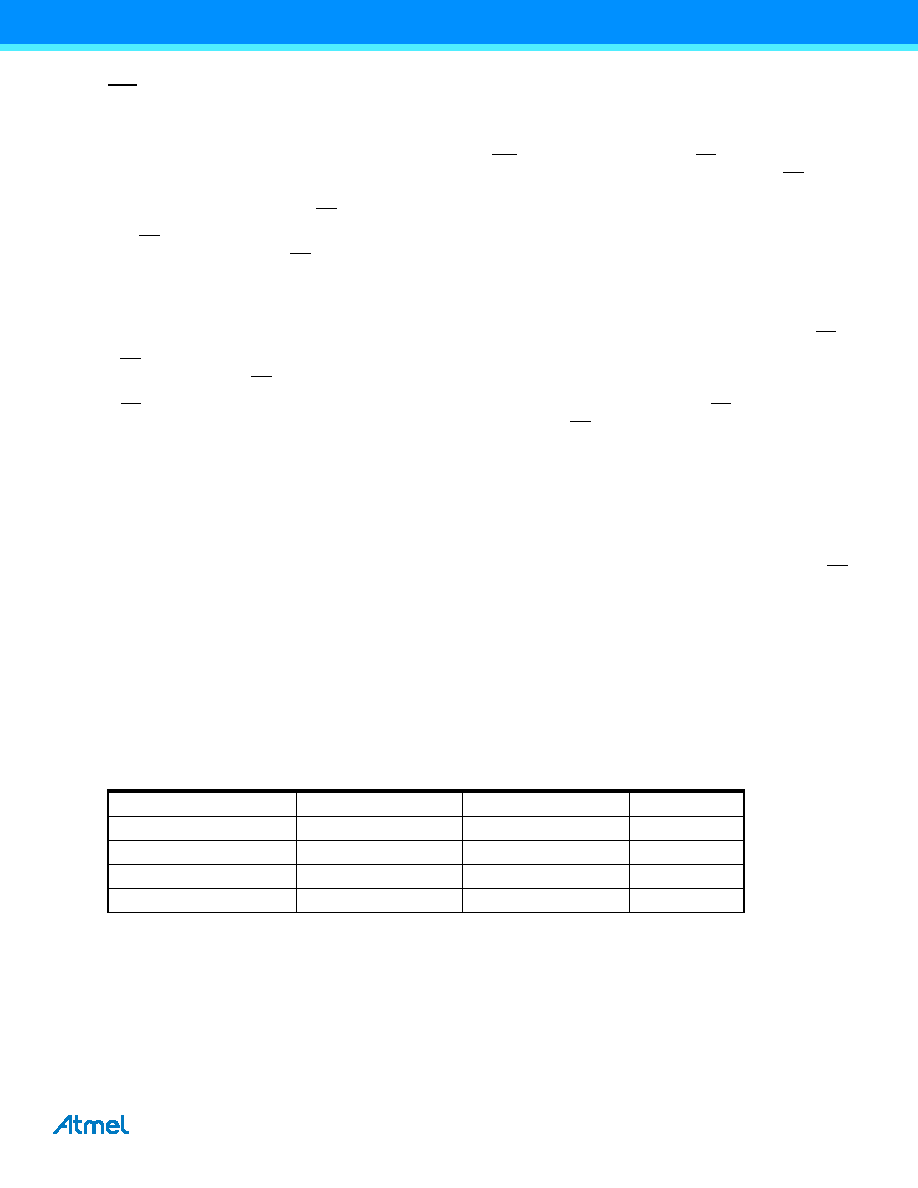- 您现在的位置:买卖IC网 > PDF目录45316 > MD83C154XXX-12P883D (TEMIC SEMICONDUCTORS) 8-BIT, MROM, 12 MHz, MICROCONTROLLER, CDIP40 PDF资料下载
参数资料
| 型号: | MD83C154XXX-12P883D |
| 厂商: | TEMIC SEMICONDUCTORS |
| 元件分类: | 微控制器/微处理器 |
| 英文描述: | 8-BIT, MROM, 12 MHz, MICROCONTROLLER, CDIP40 |
| 文件页数: | 54/365页 |
| 文件大小: | 61013K |
| 代理商: | MD83C154XXX-12P883D |
第1页第2页第3页第4页第5页第6页第7页第8页第9页第10页第11页第12页第13页第14页第15页第16页第17页第18页第19页第20页第21页第22页第23页第24页第25页第26页第27页第28页第29页第30页第31页第32页第33页第34页第35页第36页第37页第38页第39页第40页第41页第42页第43页第44页第45页第46页第47页第48页第49页第50页第51页第52页第53页当前第54页第55页第56页第57页第58页第59页第60页第61页第62页第63页第64页第65页第66页第67页第68页第69页第70页第71页第72页第73页第74页第75页第76页第77页第78页第79页第80页第81页第82页第83页第84页第85页第86页第87页第88页第89页第90页第91页第92页第93页第94页第95页第96页第97页第98页第99页第100页第101页第102页第103页第104页第105页第106页第107页第108页第109页第110页第111页第112页第113页第114页第115页第116页第117页第118页第119页第120页第121页第122页第123页第124页第125页第126页第127页第128页第129页第130页第131页第132页第133页第134页第135页第136页第137页第138页第139页第140页第141页第142页第143页第144页第145页第146页第147页第148页第149页第150页第151页第152页第153页第154页第155页第156页第157页第158页第159页第160页第161页第162页第163页第164页第165页第166页第167页第168页第169页第170页第171页第172页第173页第174页第175页第176页第177页第178页第179页第180页第181页第182页第183页第184页第185页第186页第187页第188页第189页第190页第191页第192页第193页第194页第195页第196页第197页第198页第199页第200页第201页第202页第203页第204页第205页第206页第207页第208页第209页第210页第211页第212页第213页第214页第215页第216页第217页第218页第219页第220页第221页第222页第223页第224页第225页第226页第227页第228页第229页第230页第231页第232页第233页第234页第235页第236页第237页第238页第239页第240页第241页第242页第243页第244页第245页第246页第247页第248页第249页第250页第251页第252页第253页第254页第255页第256页第257页第258页第259页第260页第261页第262页第263页第264页第265页第266页第267页第268页第269页第270页第271页第272页第273页第274页第275页第276页第277页第278页第279页第280页第281页第282页第283页第284页第285页第286页第287页第288页第289页第290页第291页第292页第293页第294页第295页第296页第297页第298页第299页第300页第301页第302页第303页第304页第305页第306页第307页第308页第309页第310页第311页第312页第313页第314页第315页第316页第317页第318页第319页第320页第321页第322页第323页第324页第325页第326页第327页第328页第329页第330页第331页第332页第333页第334页第335页第336页第337页第338页第339页第340页第341页第342页第343页第344页第345页第346页第347页第348页第349页第350页第351页第352页第353页第354页第355页第356页第357页第358页第359页第360页第361页第362页第363页第364页第365页

147
ATmega165A/PA/325A/PA/3250A/PA/645A/P/6450A/P [DATASHEET]
8285E–AVR–02/2013
19.3
SS Pin functionality
19.3.1
Slave Mode
When the SPI is configured as a Slave, the Slave Select (SS) pin is always input. When SS is held low, the SPI is
activated, and MISO becomes an output if configured so by the user. All other pins are inputs. When SS is driven
high, all pins are inputs, and the SPI is passive, which means that it will not receive incoming data. Note that the
SPI logic will be reset once the SS pin is driven high.
The SS pin is useful for packet/byte synchronization to keep the slave bit counter synchronous with the master
clock generator. When the SS pin is driven high, the SPI slave will immediately reset the send and receive logic,
and drop any partially received data in the Shift Register.
19.3.2
Master Mode
When the SPI is configured as a Master (MSTR in SPCR is set), the user can determine the direction of the SS pin.
If SS is configured as an output, the pin is a general output pin which does not affect the SPI system. Typically, the
pin will be driving the SS pin of the SPI Slave.
If SS is configured as an input, it must be held high to ensure Master SPI operation. If the SS pin is driven low by
peripheral circuitry when the SPI is configured as a Master with the SS pin defined as an input, the SPI system
interprets this as another master selecting the SPI as a slave and starting to send data to it. To avoid bus conten-
tion, the SPI system takes the following actions:
1.
The MSTR bit in SPCR is cleared and the SPI system becomes a Slave. As a result of the SPI becoming a
Slave, the MOSI and SCK pins become inputs.
2.
The SPIF Flag in SPSR is set, and if the SPI interrupt is enabled, and the I-bit in SREG is set, the interrupt
routine will be executed.
Thus, when interrupt-driven SPI transmission is used in Master mode, and there exists a possibility that SS is
driven low, the interrupt should always check that the MSTR bit is still set. If the MSTR bit has been cleared by a
slave select, it must be set by the user to re-enable SPI Master mode.
19.4
Data Modes
There are four combinations of SCK phase and polarity with respect to serial data, which are determined by control
bits CPHA and CPOL. The SPI data transfer formats are shown in Figure 19-3 on page 148 and Figure 19-4 on
page 148. Data bits are shifted out and latched in on opposite edges of the SCK signal, ensuring sufficient time for
data signals to stabilize. This is clearly seen by summarizing Table 19-3 on page 149 and Table 19-4 on page 149,
as done below:
Table 19-2.
CPOL functionality.
Leading Edge
Trailing eDge
SPI Mode
CPOL=0, CPHA=0
Sample (Rising)
Setup (Falling)
0
CPOL=0, CPHA=1
Setup (Rising)
Sample (Falling)
1
CPOL=1, CPHA=0
Sample (Falling)
Setup (Rising)
2
CPOL=1, CPHA=1
Setup (Falling)
Sample (Rising)
3
相关PDF资料 |
PDF描述 |
|---|---|
| MR83C154XXX-12P883 | 8-BIT, MROM, 12 MHz, MICROCONTROLLER, CQCC44 |
| MQ83C154TXXX-12/883R | 8-BIT, MROM, 12 MHz, MICROCONTROLLER, CQFP44 |
| MD80C154-16/883 | 8-BIT, 16 MHz, MICROCONTROLLER, CDIP40 |
| MR83C154XXX-16P883 | 8-BIT, MROM, 16 MHz, MICROCONTROLLER, CQCC44 |
| MR83C154CXXX-36P883R | 8-BIT, MROM, 36 MHz, MICROCONTROLLER, CQCC44 |
相关代理商/技术参数 |
参数描述 |
|---|---|
| MD8412B | 制造商:未知厂家 制造商全称:未知厂家 功能描述:LINK(IEEE 1394) |
| MD8451H-8/B | 制造商:undefined 功能描述: |
| MD845A-R2 | 制造商:Black Box Corporation 功能描述:MODEM 202 |
| MD845A-R2-W1 | 制造商:Black Box Corporation 功能描述:1 YEAR WARRANTY FOR MD845A-R2 |
| MD845A-R2-W3 | 制造商:Black Box Corporation 功能描述:3 YEAR WARRANTY FOR MD845A-R2 |
发布紧急采购,3分钟左右您将得到回复。